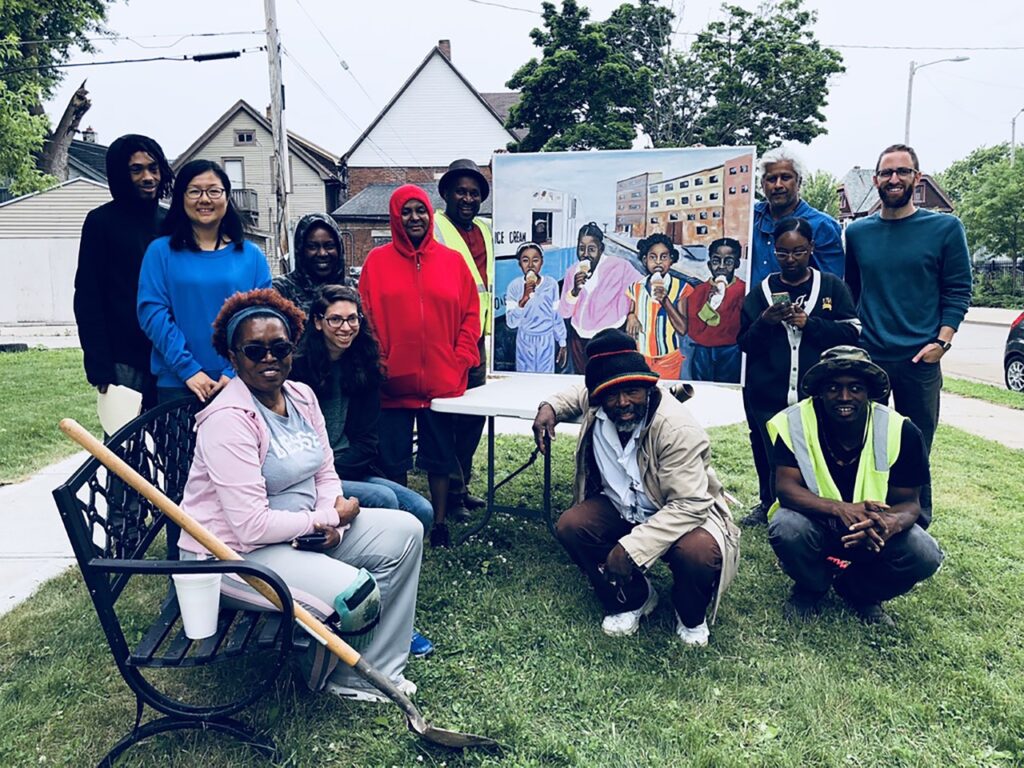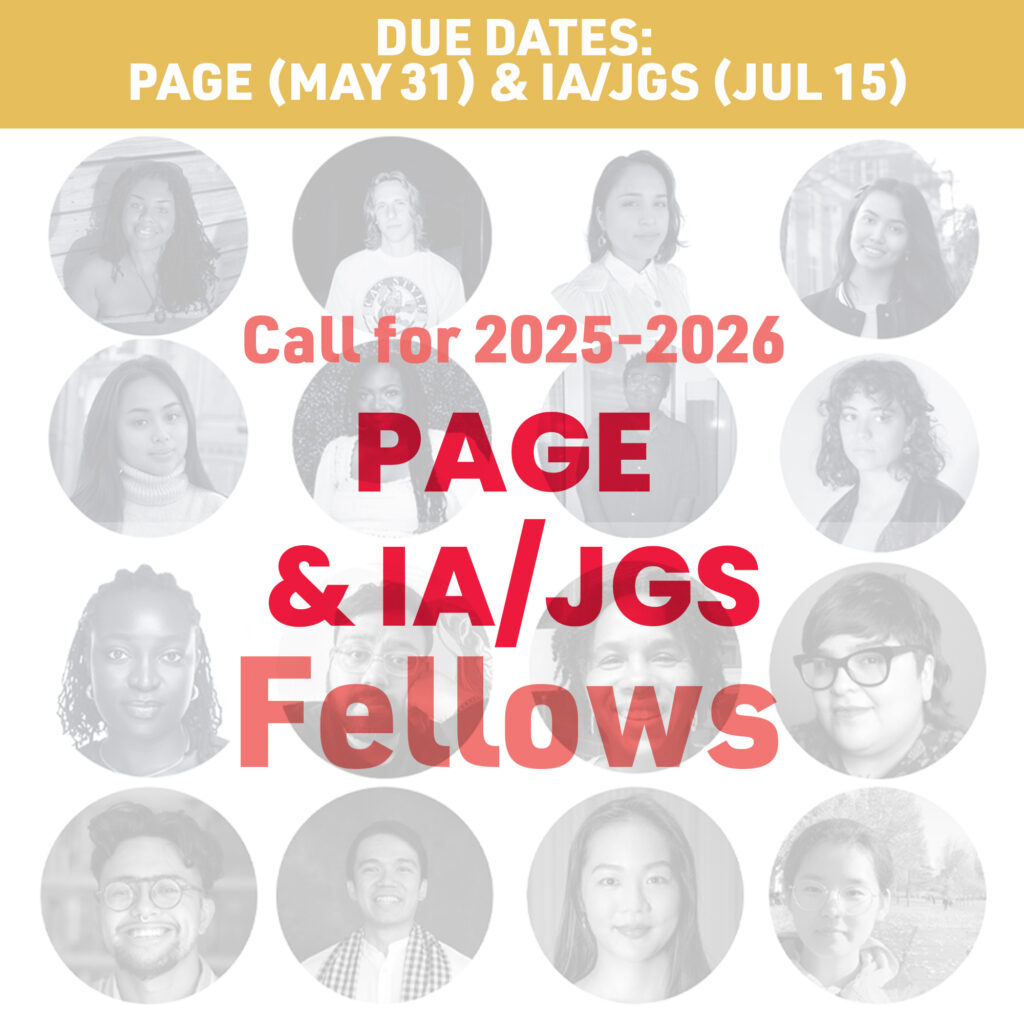The Buildings-Landscapes-Cultures Project
Arijit Sen, Associate Professor of Architecture and Urban Planning, University of Wisconsin, Milwaukee
Abstract
Buildings-Landscapes-Cultures Field School was set up in 2012 to counter the historical silencing and purposeful erasure of everyday histories of marginalized places and people in Milwaukee. We have worked with residents of two neighborhoods, Washington Park and Sherman Park, who told us their stories of grassroots democracy, civic action, and resistance against structural racism and environmental injustice. We witnessed block leaders share their skills to empower their neighbors, homeowners practice acts of care to resist food insecurity, crime, delinquency, and environmental injustice; and elders encourage younger adults to become civic guardians. We discovered the importance of place in these stories of hope, and we developed methods to see the material world differently in order to capture the elements of human experience that traditional methods of architectural documentation and oral histories miss. By continuously telling and retelling, listening and reacting, documenting and constructing, this multi-year, multi-disciplinary, and immersive project generated catalytic moments of fellowship and produced collaborative action between students and community residents. In the summer of 2021, the Field School model was adopted by Wisconsin Humanities to plan an ambitious statewide Public Humanities project that encourages recently graduated undergraduates to return to their communities with local groups to transform their world. Our story reaffirms an old tradition called the Wisconsin Idea, championed by the University of Wisconsin higher education system: “education should influence people’s lives beyond the boundaries of the classroom.”
Project Narratives
…hope is a discipline and that we have to practice it every single day. Because in the world which we live in, it’s easy to feel a sense of hopelessness, that everything is all bad all the time, that there is nothing going to change ever, that people are evil and bad at the bottom… I choose to think a different way, and I choose to act in a different way…
——“Hope is a Discipline,” Miriam Kaba
The Buildings-Landscapes-Cultures Field School (hereafter referred to as the Field School) was established in 2012 to explore ways to counter the historical silencing and purposeful erasure of the everyday histories of marginalized places and people in Milwaukee.
Sit in an architectural history class at the University of Wisconsin, Milwaukee. You will hear little of the history and heritage of Milwaukee’s Black, Brown, or Asian communities. In 2019, the percentage of Black students in the University was a woeful 6.94% of the total population.[i] The racial disparity was worse at the School of Architecture and Urban Planning. That year, only 5 Black students (5.4% of the total population) graduated with a bachelor’s degree, and zero made it to the graduate program.[ii] For those few 5.4% students, the history lectures were not merely alienating — they also denied the relevance of the students’ heritage within the disciplinary canon.
The erasure of minority histories is equally violent regarding the city government. The City’s visitors map (Figure 1) celebrates downtown and East Side neighborhoods for their historical, cultural, and economic vibrancy. Still, it oddly renders many of the North Side neighborhoods gray and bereft of any value. Historically, North Side neighborhoods have been where Black and immigrant residents live.[iii] These neighborhoods have experienced a long history of racism, exclusionary policies, and destructive urban renewal. This history, marred by racial segregation and environmental injustice, has led to spiraling poverty and disinvestment.
At the Field School, with the help of community residents, we discover a different story: how residents of two neighborhoods, Washington Park and Sherman Park, promote grassroots forms of democracy, civic action, and resistance against structural racism and environmental injustice. As Miriam Kaba explains, grassroots resistance and transformation are built on hope as an everyday practice, a practice that is always bending, accommodating, and responding to the specific exigencies of everyday life. We discover the importance of place in these stories: residents resist racist urban policies by investing in their homes; they counter deep-rooted injustices by meeting in vacant lots that they transform into community commons; they counter hunger and industrial pollution by planting urban gardens, and they use porch-sitting as a form of community policing. Each of these stories centers on activities in places that matter to local residents.
The injustices experienced by marginalized communities of color are not limited to inequities perpetuated by unjust policies. Silencing, suppressing, and ignoring the heritage of marginalized groups is a kind of injustice that, according to Nancy Fraser, emerges from the politics of recognition. [iv] An outsider may not immediately recognize that boarded-up buildings, ubiquitous police violence, or lack of fresh food are results of a long history of segregation, twentieth-century redlining, and public health crises. Instead, they may see neighborhoods marked by potholes and crime as a natural result of poverty and apathy. A long history of purposeful injustice and declension is not dramatic and as Rob Nixon argues, “slow violence … occurs gradually and out of sight, a violence of delayed destruction that is dispersed across time and space, an attritional violence that is typically not viewed as violence at all.” The Field School heeds Nixon’s urging “to engage the representational, narrative, and strategic challenges posed by the relative invisibility of slow violence.”[v]

Expanding knowledge production and rethinking fieldwork
We had to rethink our methods at the Field School in order to see the material world differently, to capture the elements of human experience that traditional methods of architectural documentation and oral histories miss. Our methods, borrowed from collaborative ethnography, go beyond merely talking to or hearing the community members — instead, we co-create knowledge by involving residents as critics, reviewers, and co-writers. The project, organized around students’ immersive learning alongside community residents, received national recognition (by American Association for State and Local History in 2013 and the National Humanities Alliance in 2014) as a model public humanities action-research project bringing together students, scholars, and community members to document the city via storytelling, deep listening, and civic action. Our curriculum is designed by community experts working alongside students and nationally renowned scholars from public history, architecture, urban studies, folklore, geography, anthropology, dance, film, theater, and art.[vi]
For those of us working in the field of architectural and urban studies, our methods include a careful study of the material world—how it looks, what it is made of, how it is used, how it is patterned, and what it symbolizes. Fieldwork, in this context, refers to the way we understand the world around us, document and analyze its qualities, organize information, and evaluate it as worthy, or not. Yet those very taken-for-granted methods of discerning the material and social world can render us blind because these modes of data collection are built for a world of power and permanence.
This contradiction between etic and emic perspectives is at the core of how inequality is perpetuated and established in the everyday world of Milwaukee’s North Side. Ways of seeing and interpreting the visible landscape are part of an aesthetic practice that promotes injustice, says Jacques Rancière when he uses the term, “the distribution of the sensible” an aesthetic order with implicit rules and conventions that marks “the division between the visible and the invisible, the audible and the inaudible, the sayable and the unsayable.” [viii] This aesthetic order reproduces and normalizes social inequalities.
In order to address this methodological dilemma, fieldwork practices in the Field School focus on the co-creation of knowledge through diverse forms of engagement and conversation in order to transform “the space of fieldwork from one of data collection to one of co-conceptualization.”[ix] Our process involves iterative steps:
1. Practice deep listening
2. Summarize, interpret, and disseminate collected data
3. Return to the community to attune and continue conversations
4. Operationalize the conversations via collaborative civic action
Field School participants conduct sit-down interviews with residents and run organized storytelling sessions that bring people together to talk about their history. These conversations have helped residents to identify sites and situations that promote crime, delinquency, and health disparities and have come up with appropriate local solutions to ameliorate these problems. In addition, quick smartphone-based interviews and history harvest during public events produce additional stories of place and heritage.[x] These storytelling sessions encourage community residents to make new connections with one another, build local pride, and find a common vision for their community.
Community-led walks gather residents together to tell the stories of their community while examining its architecture and generating imaginative approaches towards the use of public space, as seen in the creation of community gardens from vacant lots. Community members identify how vacant buildings and unused structures may be repurposed for entrepreneurial ventures unique to their needs. These sites are marked on digital story maps that are overlaid with audio clips of residents telling the stories of why these spaces matter to them.[xi] (For example, see https://tinyurl.com/y4aaa8yk).
Our engagement continues over multiple years. Since 2014, we have collected and interpreted the stories of local community members and have helped to share them back with the community via architecture websites, podcasts, exhibits, installations, theater, dance and performances, community storytelling sessions, and a freely accessible digital archive. This iterative process helps us sustain a long-term conversation with our community partners. Field School scholars work alongside community residents to build gardens, furniture, and sheds, hold art events, and community barbeques. This continuous telling and retelling, listening and reacting, documenting and constructing produce catalytic moments of fellowship.[xii] The process galvanizes the community around improvement projects and civic organizing, sometimes in ways, we don’t plan for. Over a period of 7 years, with the help of 68 student volunteers and numerous local residents, the Field School collected 245 hour-long sit-down interviews, over 100 short interviews, and documents of 45 buildings and sites as material expressions of culture and heritage.
Catalyzing institutional change and looking outwards
Working within the university setting was always difficult. The semester-based rhythm of the university never works well with a community schedule. The institutional expectations of research practice, such as those determining how we can spend money and what constitutes scholarship, hamper our need to compensate community experts and conduct community events. Most importantly, a lack of interest in the aesthetics and histories of ordinary people and vernacular places among design faculty challenges the validity of our work.[xiv] The Field School looks outward, welcomes non-student participants, and explores strategies of engaged humanities borrowed from a wide variety of disciplines. Our persistence has paid off; others have heard of our work and welcomed us in their midst.
In Summer 2021, Wisconsin Humanities adapted the methods used at the Field School in order to plan an ambitious Public Humanities “field school” that encourages recently graduated undergraduates to return to their community and work with community groups to transform the world they know. Our goal is to hire and train young Wisconsinites in humanities-based community engagement techniques and other 21st-century skills. These young people will implement locally-designed projects in partnership with leaders in public and private sectors alongside community residents who want to help their hometowns and neighborhoods thrive. We will identify local libraries as social infrastructure and seek out librarians to serve as mentors and resources for these young Field Schoolers. The first iteration of the Community Powered Initiative begins in June 2022. This unique publicly engaged, and activist humanities project reaffirms an old tradition called the Wisconsin Idea, championed by the University of Wisconsin higher education system: “education should influence people’s lives beyond the boundaries of the classroom.”[xvi]

Demonstrating the Power of Public, Engaged, and Activist Humanities
How can engaged humanities offer a powerful platform for scholars and community experts to fight social injustice? At the Field School, we find that in order to achieve that goal, we have to rethink, carefully and critically, some of our fundamental traditions.[xvii]
Merely studying cultures and buildings rarely tells us much about the tumultuous dark history of racial discrimination and systemic injustice whose battle scars remain imprinted in the physical fabric of this city. The long history of grassroots struggles and victories against injustice becomes palpable when researchers allow community experts to become our teachers. Central to that learning process is a commitment of time and a willingness to be open to fortuity. We realize that community-engaged processes are ever-evolving, contingent, and emergent. That process and promise to stay help us discern the world of Washington Park and Sherman Park in ways that would have been imperceptible over a short duration. When we return to the community, repeatedly, we open up new opportunities that offer us new ways of knowing. Our experience in Washington Park and Sherman Park has taught us that serendipity, ephemerality, and relational thinking can produce transformative social change.
When the COVID-19 pandemic made face-to-face engagement impossible, we were forced to explore alternative ways to re-engage our community partners. During the summer of 2020, we designed a series of interactive zines with the goal that these documents could spur conversations without us being present as facilitators. We stuffed these zines inside bags filled with fresh, locally-grown produce and delivered them on a weekly basis to block leaders. The leaders then distributed these bags to their neighbors while engaging the latter in conversations across the fence, in front yards, and along sidewalk verges. In a community threatened by a lack of fresh food and safe spaces, these outdoor conversations became social catalysts in a world stalled by the epidemic.
This experience made visible the ubiquitous social and spatial infrastructure that we take for granted. Despite a long history of racism, neglect, poverty, scarcity, and injustice, marginalized communities survive through a vibrant network of public spaces, relationships, and organizations that foster social ties. The pandemic impacted this vital network because it halted mundane conversations, everyday collaborations, and face-to-face social interactions. Suddenly, by its very absence, we realize the importance of the shared commons (as used by Silvia Federici) as social infrastructure in Milwaukee’s segregated and marginalized communities.[xviii] As we examine the constituent parts of the shared commons — front porches, shared spaces, seasonal garden lots, communal orchards, pocket parks, and even illegal dumpsites, we recognize that our ocular-centric methods focusing on permanent buildings, property lots, infrastructure, street layout, and day-time data collections are fraught tools. Instead, everyday practices of caring and networks of human relationships offer contingent yet powerful forms of political organizing and transformative political action. The commons, we discover, are networks of spaces and situations that are often physically disconnected but socially related to each other. While architects and planners are trained to look for territorial proximity, the commons are often a system of settings, activities, flows of people, micro-climates, and ecologies mediated by human and non-human actors. In the context of Sherman Park and Washington Park, examples include geographically dispersed gardens maintained by gardeners but connected by growers, butterflies, and topography. The commons are experiential, too — made up of homes, businesses, and porches activated during everyday practices of care and mutual aid, networks of memorials, murals, and adornments on porches, flamingos on front yards, painted rainwater barrels, and embellishments on street edges. Commons also include dumpsites and homeless encampments that reproduce what Samuel Truett calls fugitive landscapes due to their location and invisibility.
The Field School demonstrates how cultural significance doesn’t always work in the form of appearances — ornaments, building form, and material improvements. Capturing soundscapes, mapping movement, documenting short-lived events, learning to see spaces in-between buildings, and mapping a networked system of sites may enrich our fieldwork and help us articulate invisible worlds that escape our narrow ocular-centric methods.
What do the Field School methods of discerning the world offer us, and what are its challenges? As always, increased visibility makes these spaces subject to discipline and punishment from the city and its agents of surveillance and injustice — police, inspectors, planners, architects, academics, gentrifiers, and even well intentioned liberal do-gooders. But it also empowers local residents. If carefully integrated within civic conversations at the local level, this knowledge can lead to powerful acts of local resistance against structural forms of injustice. At our Field School, we have seen lay residents share their skills to empower their community, homeowners practice acts of care to resist food insecurity, crime, delinquency, and environmental injustice, and locals encourage younger adults to dream of being civic guardians. As Bettina Love writes, these “are not whimsical, unattainable daydreams, they are critical and imaginative dreams of critical resistance.”[xix]
[i]Figures are taken from the University of Wisconsin website. See, University of Wisconsin Milwaukee, UWM Facts, Facts Database, https://uwm.edu/facts/, (Accessed August 30, 2021).
[ii] See, College Factual, General Architecture at University of Wisconsin – Milwaukee, https://www.collegefactual.com/colleges/university-of-wisconsin-milwaukee/academic-life/academic-majors/architecture-and-related-services/general-architecture/#diversity, (Accessed August 30, 2021).
[iii] According to the 2010 United States Census, 39.97% of the total urban population of Milwaukee was African American. See US Census Bureau, Quick Facts, Milwaukee City, Wisconsin,
https://www.census.gov/quickfacts/fact/table/milwaukeecitywisconsin/RHI225219#RHI225219, (Accessed August 30, 2021).
[iv] Nancy Fraser, “Social Justice in the Age of Identity Politics: Redistribution, Recognition and Participation.” in Redistribution or Recognition?: A political-philosophical Exchange, Nancy. Fraser and A. Honneth, eds (New York: Verso, 2003), pp. 7–109.
She writes that “be misrecognized… is not simply to be thought ill of, looked down on, or devalued in others’ conscious attitudes or mental beliefs. It is rather to be denied the status of a full partner in social interaction and prevented from participating as a peer in social life due to institutionalized patterns of cultural value that constitute one as comparatively unworthy of respect or esteem.” Fraser, “Social Justice,” p. 3
Scholars use the term “epistemic violence” to describe this process of forced de-legitimation, sanctioning, and repression of histories of marginalized and subaltern groups.
See also Charles Taylor, “The Politics of Recognition,” Multiculturalism: Examining the Politics of Recognition, ed. Amy Gutmann (Princeton University Press, 1994).
Axel Honneth, The Struggle for Recognition: The Moral Grammar of Social Conflicts, trans. Joel Anderson (Polity Press, 1995).
[v] Rob Nixon, Slow Violence and the Environmentalism of the Poor, (Cambridge: Harvard University Press, 2011): 2.
See also Brian Martin, “Slow Injustice,” Social Alternatives 26: 4, (Fourth Quarter 2007): 5-9. https://www.bmartin.cc/pubs/07sa2.html, (Accessed September 8, 2021).
[vi] The following scholars are among the many who have taught at the Field School since 2012: Erin Dorbin, artist and community historian; Jeffrey Klee, architectural historian; Anna Andrzejewski, architectural historians; Travis Olson, architectural historian; Michael Frisch, oral historian; Guha Shankar, folklorist; Eric Lassiter, anthropologist; Michael Gordon, labor historian; Jasmine Alinder, art historian; Simon Bronner, folklorist’ Steve Wetzel, Film and recording artist; Simone Ferro, dance and performance artist; Jill Sebastian, artist; Renee Scampini, Urban Studies scholar; Helen Bullard, a scholar of arts; and Alvaro Rios, playwright.
[vii] See, Arijit Sen and Lisa Silverman, Making Place: Space and Embodiment in the City, (Bloomington: Indiana University Press, 2014).
[viii] Jacques Rancière, The Politics of Aesthetics, (New York: Continuum, 2007): 3.
[ix]See p. 5 in Joanne Rappaport, “Beyond Participant Observation: Collaborative Ethnography as Theoretical Innovation,” Collaborative Anthropologies 1 (2008): 1-31.
[x] We differ from other public history field schools because we focus on place as material expressions of everyday culture and as a repository of history, memory, and identity. See http://thefieldschool.weebly.com/what-we-do.html.
[xi] We produced counter-maps or “local mapping, produced collaboratively, by local people and often incorporating alternative local knowledge.” These maps have taken on an unexpected role as a community organizing tool, engaging block residents around preservation efforts to save places that matter to them from rapacious developers and youthful gentrifyers.
See p. 127 in Chris Perkins, “Community Mapping,” The Cartographic Journal 44: 2 (ICA Special Issue 2007): 127-137.
[xii] An example of such a story became the topic of a Wisconsin Humanities podcast. See “Power of Listening with Arijit Sen, Episode 1, Human Powered podcasts, https://wisconsinhumanities.org/episode-1/, (Accessed August 10, 2021).
[xiii] Our methods draw from public history, architectural and urban history, material culture studies, cultural geography, and art practice.
[xiv] See, Arijit Sen, “Ceding Control of the Syllabus: Notes on How I Struggle with Teaching,” Race | Space Blog, McGill University, October 10, 2020, https://blogs.mcgill.ca/race-space/2020/10/10/ceding-control-of-the-syllabus-notes-on-how-i-struggle-with-teaching-by-arijit-sen/, (Accessed August 10, 2021).
[xv] The exhibit has an online presence. See, https://www.humanitiesactionlab.org/climatesofinequality
[xvi] For more on the Wisconsin Idea, see, https://www.wisc.edu/wisconsin-idea/
[xvii] Arijit Sen, “Spatial ethnography of Devon Avenue, Chicago,” Buildings & Landscapes 28:2 (Forthcoming, Fall 2021).
Arijit Sen, “Doing Fieldwork with Community Residents: Mapping Spaces of Everyday Resistance in Milwaukee’s Northside Neighborhoods,” Future Anterior 15:2 (Forthcoming, Spring 2022).
[xviii] Silvia Federici, “Women, Reproduction, and the Commons,” South Atlantic Quarterly 118: 4 (2019): 711–724.
[xix] Bettina L. Love, We Want to Do More than Survive, (Boston: Beacon Press, 2019): 101.


